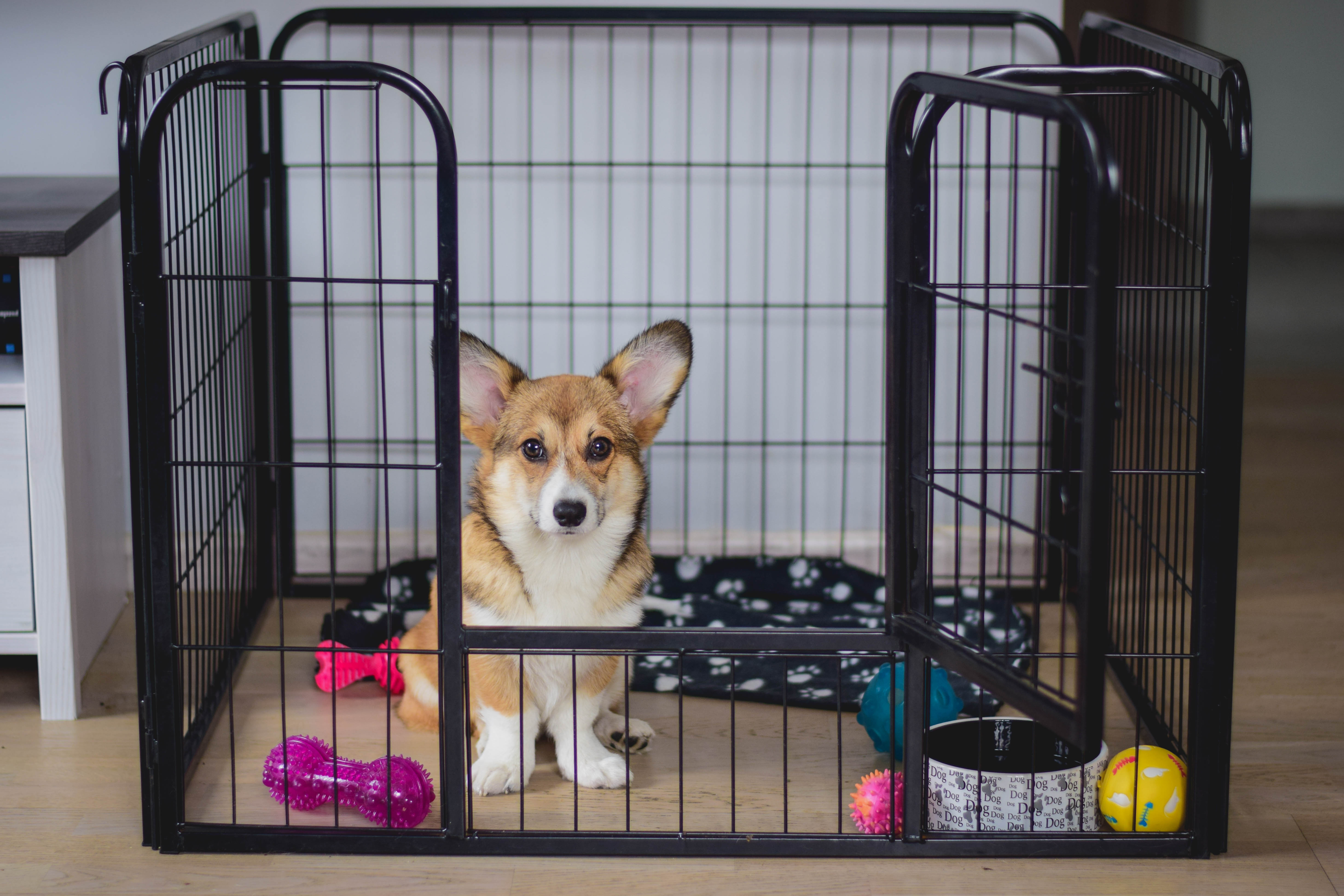Crate Training Your Puppy
Crate training is a highly effective way to kick off your dog’s lessons in obedience. It leverages a canine’s innate instinct to seek shelter in a den; your dog’s crate becomes a safe haven – a place where they can retreat to safety. This basic form of training comes with numerous advantages and is simple to implement.
Here we’ll be taking you through a guide on crate training your puppy. We’ll be showing you how crate training helps the well-being of your furry friend while pointing out the technique, and how your home benefits as well.
Benefits of Crate Training Your Puppy
Crate training comes with many lateral benefits. As your companion grows to love their little sanctuary, they will be calmer and more focused. This allows you to entrain other habits easier. Advanced obedience techniques taught by program like Brain Training for Dogs are even easier to grasp. Let’s take a closer look at some of the benefits of crate training your puppy.
House Breaking
A puppy who is taught crate training takes advantage of the potty training which comes with it. A dog will never go where they sleep. Use the opportunity to allow let your dog carry out their business each time that you open the crate. Take them outside and nature’s urges will take over. After just a few tries, the habit to head outside when nature calls will be automatic.
Transporting
Once a puppy is used to being inside of its crate, transport will be much easier. Trips to the vet are made easy thanks to the safety of a well-used crate. Plan ahead and begin adjusting your dog towards being used to two different crates; one for sleeping and one for travel is always a good idea. Make sure that the first couple of trips in the crate are made only after your dog is completely at ease, and be sure to head somewhere fun.
Time Out
The fact that your dog’s crate is a safe place makes it the ideal time-out corner. Don’t use it as a time-out zone too often but once your puppy is used to its cage, you can help your dog settle down after being naughty by putting it in a crate.
Most dogs are closed to communication while in an unruly state. Time in the crate helps them calm down and establishes a boundary. A crate as a time-out should be a last resort as you don’t want to develop any negative associations at all.
How to Crate Train Your Puppy
Crate training your puppy is a gradual process. With patience and proper positive reinforcement, your dog will soon start using its crate on their own as soon as they are tired. Crate training serves as a great primer to more advanced techniques such as the excellent Brain Training for Dogs training system for unlocking the hidden intelligence of your pooch. Even without any crate training, this system will help bring out the full potential of your canine companion.
-
Introducing Your Puppy to the Crate
Start off by putting their crate in a room where you spend a lot of time. Put in a blanket and perhaps a toy or two. Open the door and then call your puppy. Curious puppies usually wander towards the crate right away.
If your dog doesn’t decide to explore naturally, then try luring them with some treats just inside the door. Don’t punish your dog during this process. It may take minutes before they’re used to the crate but some dogs can take up to a week. Once completely comfortable in and around the crate, it’s time for step two.
-
Feeding Time
After familiarizing your canine with their crate, its feeding time. Put your dog’s food dish all the way into the crate. Put in at the back so that your dog has to be in the crate completely when eating. If your pup is still reluctant to eat inside the crate, put the bowl closer to the entrance. Upon each feeding, move it further in. Only once your dog is completely comfortable as they eat inside the crate, close the door.
For the first few times, open the door as soon as they’re finished eating. Gradually wait a little longer before closing until they spend up to 10 minutes in their crate without whining. When your dog whines, only let them out after they stop. Otherwise whining will be your canine’s go-to when they want out of the crate.
-
Introducing Commands and Building Familiarity
Start using the crate more and more often, increasing the period in the crate. Call your dog to the crate infrequently and give them a treat when they listen. A command should be introduced like “kennel” or “box.” Be sure to encourage your canine as you do so by pointing towards the inside of your crate with a tasty treat in your hand.
Praise your puppy as soon as they respond to your command. Let them enter the crate then give them their treat. Spend some time near the crate (5 to 10 minutes) before stepping into another room for a little while. You’ll need to repeat this process a few times a day, increasing the length of time that you remain unseen.
Once your puppy is happy to stay in the crate for roughly 30 minutes, you are fine to leave them in the crate for short periods. Now you can also use the crate as their sleeping place.
Training to Leave the House
Once your puppy is happy and comfortable in their crate for half an hour at a time, most of the work is done. Before leaving home or heading to bed, it is a good idea to speak your command for their kennel or box and put a few of their favorite toys in. A dog needs to be crated a few minutes before you’re ready to depart.
Getting them used to this routine is the best for their nerves. Departures should never be drawn out, emotional experiences You want to reach the point where you command your dog to their crate rewarding their obedience with a treat, and then leave immediately without any further fuss.
Similarly, when you return home don’t reward your dog for its over-eager, excited behavior. The less you reward this behavior there will be less separation anxiety as well.
Pure Positive Reinforcement
Your dog’s crate is a place of safety and security. You don’t want to begin associating crating specifically with being left alone, nor any negative reinforcement. The command for crating your puppy should always be taught with a treat. It can take weeks or even months before a puppy begins to associate crating without a reward being present.
Positive reinforcement of the habit by constantly building good associations to the crate will reward puppy and owner with an even stronger bond than before. If you can’t seem to get your furry friend to adjust, then it may be time for a professional positive reinforcement program like Brain Training for Dogs. Thanks to enriching your dog’s own intelligence, good behavior and obedience comes as the result of a loving bond.

